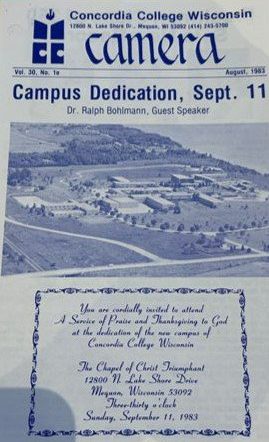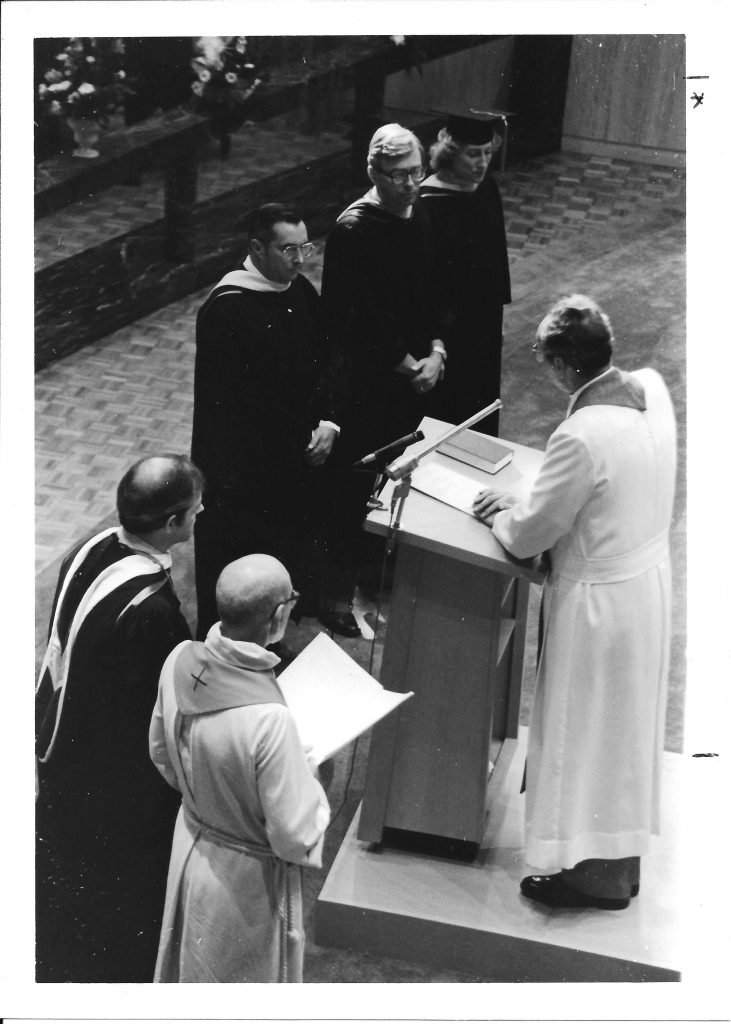
Concordia has come a long way since its 13-student start in the basement of Trinity Lutheran School in downtown Milwaukee.
From its inception in 1881 to today, Concordia University Wisconsin’s enrollment has grown to encompass some 6,800 students comprised of on-campus, online, or hybrid learners at the undergraduate, master’s, and doctoral levels.

However, had the school remained at its downtown Milwaukee campus it likely would not be where it is today in terms of its student population. The decision to move came at a pivotal point in the school’s history, according to research undertaken by Admissions Visit Coordinator Cassandra Chmielewski.
Chmielewski chose to dive into the archives and explore the decisions leading up to Concordia’s relocation as part of her master’s coursework. Chmielewski joined the Concordia team in January 2022 and was in the process of finishing her Master of Education when she began.
One of her culminating tasks was to research a historical topic in postsecondary education using original documents and primary sources. Chmielewski chose to leverage the assignment into an opportunity to get to know a bit of history about her new place of employment.
Here are some of the insights gleaned from her work.
Concordia started out small
Both in terms of its enrollment and its scope of programs, Concordia’s start was much more narrow than what it is today. As Chmielewski notes:
Concordia College was founded in 1881 as classes were held in the basement of Trinity Lutheran School on 8th and Highland Avenue (“CUW Historical Timeline,” n.d.). After that first year, Concordia College purchased the original campus site located on 31st Street in Milwaukee, WI. During Concordia College’s formative years, the college focused on “providing classical, technical, and religious instruction for students who desired to prepare themselves for the ministry of the Lutheran Church (“History of Concordia,” n.d.).”
Several decades in, there are notable events that contributed to Concordia College’s continued expansion.
In 1960, during Concordia College’s 80th anniversary, a new record was set for enrollment at 563 students (“Record Is Set at Concordia,” 1960). In a newspaper clipping titled “Serving God ‘Not Boring’” from September 10th, 1962, Concordia College’s president, Rev. Dr. Walter W. Stuenkel, speaks to the expansion of Concordia College and the importance of its mission. President Stuenkel said, “Many young people approaching life’s vocation are more concerned about the pension arrangements than they are about the challenge the job may offer them (“Serving God ‘Not Boring’,” 1962).” President Stuenkel spoke to Concordia College’s student body of 570 students from 24 different states and Canada (“Serving God ‘Not Boring’,” 1962). As the largest student body at the time, President Stuenkel called for students to “serve the Lord abundantly (“Serving God ‘Not Boring’,” 1962)” as he reinforced Concordia College’s mission.

Co-ed admissions is a contributor
Under Stuenkel’s leadership, Concordia admitted its first female students.
Another important factor impacting enrollment at Concordia College was the addition of a new teacher education department. With this addition, “Concordia went co-educational for the first time in the fall of 1965, as the department was added. Before that, Concordia had trained future pastors only (“Concordia Has 680 Students,” n.d.).” Enrollment reached 680 students, with 143 women enrolled in the student body (“Concordia Has 680 Students,” n.d.).
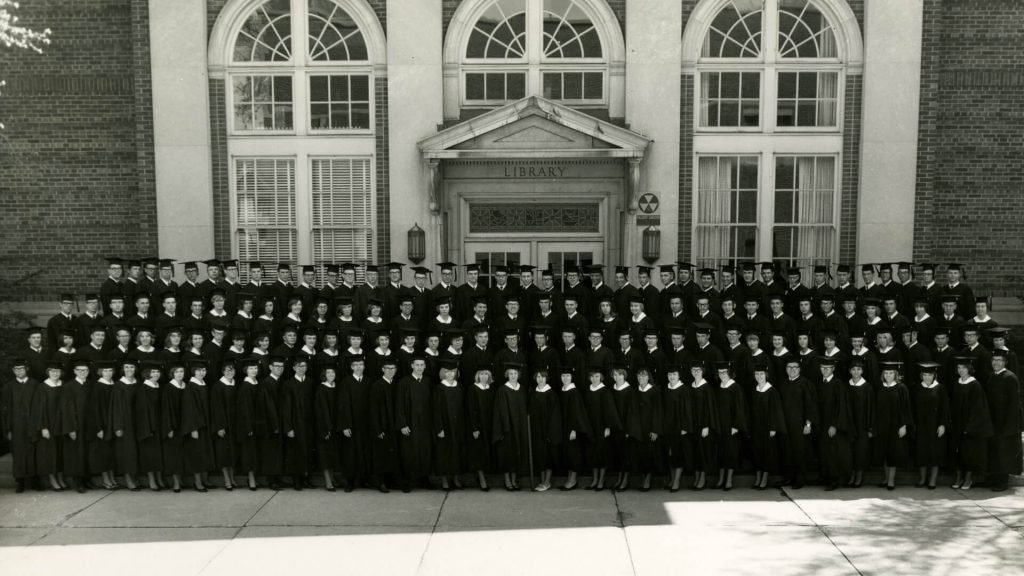
A move to a four-year school
In 1978, The Lutheran Church—Missouri Synod authorized Concordia to become a four-year accredited college. With the accreditation, Concordia sought to expand its academic programs as well.
Previously, Concordia College had been a two-year liberal arts program, but with the authorization to become a four-year accredited college, courses were needed for upper-level classes.
The increase in programs meant a need for more physical space.
Concordia College began drafting plans to expand while at their location in Milwaukee. In December of 1980, they launched a capital funds campaign titled “A Second Century in Christ” to raise $3.14 million. The money was to be used to build a $2 million library, $750,000 to expand the mission of Concordia, $250,000 for campus development, and $70,000 to renovate the administration building (“Concordia to Build New Library,” 1980). The campus development money was to be used for area and community improvements. Additionally, “acquisition and development of adjacent properties are necessary for the future growth of the College (“Centennial Fund Campaign Reaches $1.4 Million,” 1981).” In April of 1981, the campaign reached $1.4 million (“Centennial Fund Campaign Reaches $1.4 Million,” 1981). An article from early 1982 shows Concordia continuing forward with their plan. The article says Concordia College has raised more than $1.8 million and will soon launch a $1 million campaign amongst LCMS congregations (“Concordia’s Proposed Library Nears Realization,” 1982).
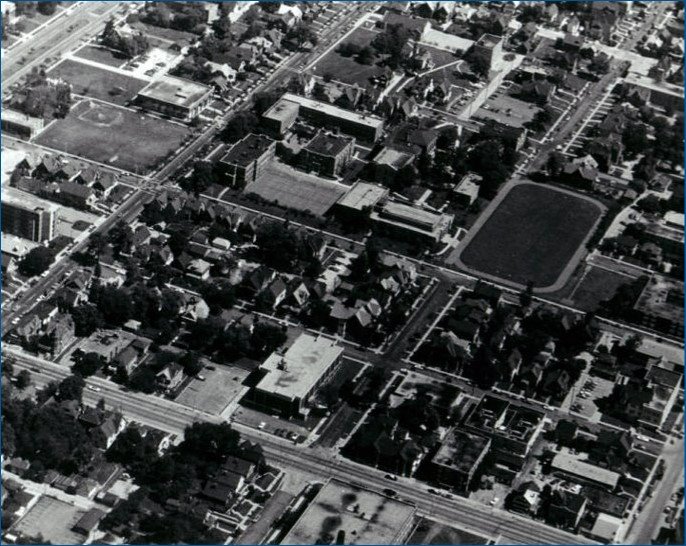
“Philosophies changed” within the community
Their plans to build and expand the campus at the Milwaukee location were soon to be changed, however.
On February 12th, 1982, an article was published stating that Concordia College was considering purchasing Notre Dame of the Lake (Kenyon, 1982). President Buuck told Concordia College’s Student Forum “that the primary motivation for the possible move to Mequon was that the school’s expansion desires were seriously hindered by the Near West Side Milwaukee residential neighborhood that surrounds it now (Kenyon, 1982).” Concordia College planned to raze the 34 houses surrounding the west side campus to clear the land for expansion (Bauer, 1982). The residents surrounding Concordia College went to the city. They urged the city to withdraw demolition permits to allow time for the residents and college administration to “develop a new college master plan that preserved most neighborhood housing (Bauer, 1982).” In Concordia’s campus newspaper, “The Courier,” President Buuck wrote,
Plans were developed to proceed with the original expansion plans at one time approved by the community, and the city. Unfortunately, philosophies changed in the community and the city regarded the moving of homes in the area as a threat to the community. Thus, a conflict developed between the college’s need to expand and the city’s need to preserve housing in the community. This conflict prompted the institution to pursue the possible purchase of the Notre Dame of the Lake facilities in Mequon (“In Christ a New Beginning,” 1982).
President Buuck stressed that there was no room for growth at Concordia College’s current site without building expansions. Notre Dame of the Lake has three times the amount of space compared to Concordia College’s present city-state (Kenyon, 1982).
Lutherans, students largely in favor of the move
Before leaders made a decision, they decided to undertake a survey to assess the projected impact of the relocation.
To assess “the effect of Concordia’s relocation on enrollment (“Survey shows move would aid Concordia,” 1982),” the LCMS sent out a survey to Concordia College students, LCMS members within the South Wisconsin District, alumni, and a segment of 1983 college applicants. The survey showed that “Concordia College would increase enrollment and financial support if it moved to the Mequon property (“Survey shows move would aid Concordia,” 1982)” and it also indicated a positive response from LCMS members regarding the relocation. With the positive findings from the survey, the LCMS board of directors began to plan to do “a financial appraisal of the Notre Dame property and a study of the market value of Concordia College (“Survey shows move would aid Concordia,” 1982).” The LCMS board of directors planned to act in May.
The capital fund campaign continued but plans to expand at Concordia College’s current site in Milwaukee were placed on hold. With the permits withdrawn and intents to build canceled by the local community, Concordia College was left with no options to expand at their current campus in Milwaukee.
On July 14th, 1982, after the LCMS board of directors scouted the location, the “vote was almost unanimous to proceed with negotiations to buy the Mequon site (“College, nuns close to deal,” 1982).” An important factor aiding their decision was that “some of the synod’s oldest area churches are near Mequon and north of it (“College, nuns close to deal,” 1982).”
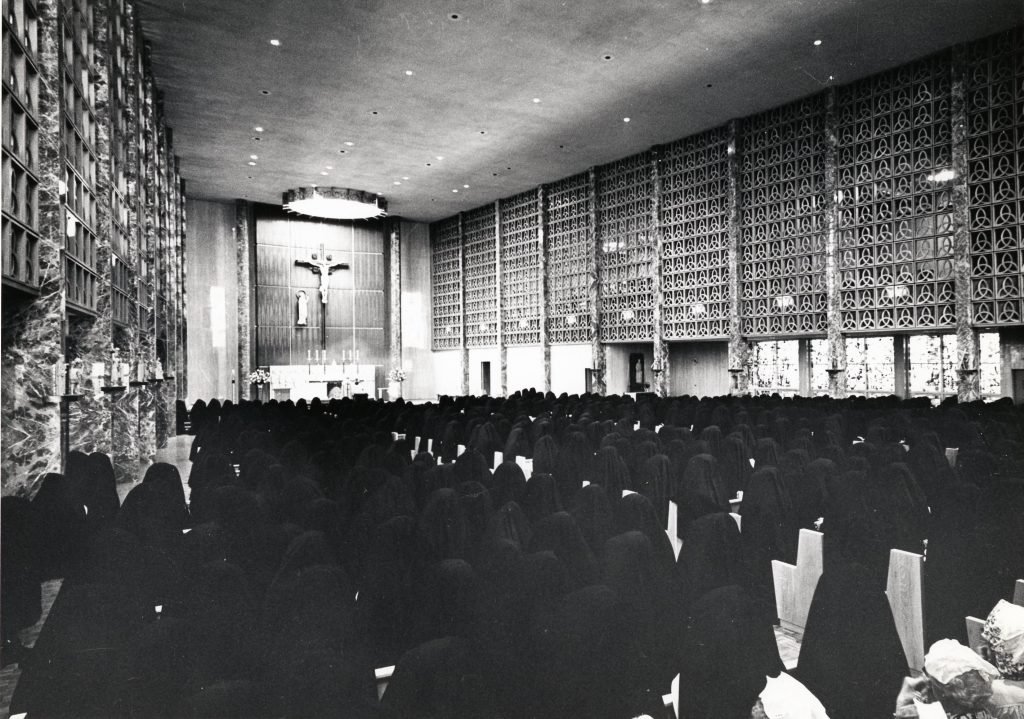
Origins of “Notre Dame of the Lake”
The original owners, the School Sisters of Notre Dame, had their own intentions for the campus when it was first constructed.
The SSND were previously located in Milwaukee, but their 109-year-old Motherhouse had foundational damage beyond repair, forcing the SSND to begin a search for a new location.
An attractive offer of a very desirable 200-acre tract of land extending a half-mile along Lake Michigan in Mequon, approximately fifteen miles north of the present Motherhouse, was the initial step toward the realization of this dream of a new home for the SSND. At first, the land was used as a farm to produce food for the sisters in the Motherhouse (“Motherhouse Chronicle,” 1955-1962).
In 1955, the SSND began to fundraise for their Building Fund. During this time, the SSND secured pledges totaling more than $3.5 million (Luke, 1958). Two years later their campus groundbreaking took place June 7th, 1957. “The campus was designed by architects Brust and Brust, Milwaukee, the contemporary-style buildings are built of masonry with brick and stone exterior. They are connected by covered passageways (Luke, 1958).” As a brief side note of interest, one of the most noticeable features throughout campus is the “bright varicolored tiles laid on the corridor floors (“Motherhouse Chronicle,” 1955-1962)” original to the building and installed in 1958. The bright varicolored tiles are a prominent feature found throughout the original buildings on campus and are still maintained today.
Throughout the SSND building project, it was found that “zoning restrictions of the town of Mequon prohibit anything like institutional dwellings, like apartment houses or hospitals. Hence, the new project is being called “Notre Dame of the Lake – A College for Sisters (“Motherhouse Chronicle,” 1955-1962).” Under this guise, the campus served as a Motherhouse for the SSND and a training center for teaching sisters. However, in 1973, the SSND closed the high school preparation attached to their campus of Notre Dame of the Lake. It was reported that trends within the Catholic Church had shifted, and “prospective sisters were encouraged to have more background in life before joining the order (“College, nuns close to deal,” 1982).” This meant a high school for aspirants was no longer needed. With only 130 resident nuns living on campus, the decision was made to sell the property as it was much too large for them to maintain and upkeep (“College, nuns close to deal,” 1982).
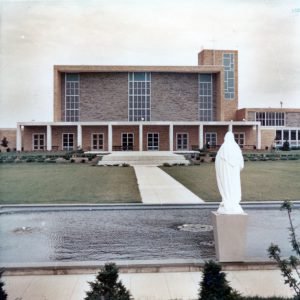
An ideal location for a college
On Sept. 15, 1982, “Notre Dame of the Lake” was purchased from the SSND for Concordia.
The SSND signed a “$7.1 million offer from the Lutheran Church-Missouri Synod to buy their 102-acre Mequon campus and relocate Concordia College there (“Sisters agree to sell campus in Mequon for Concordia College move,” 1982).” It was decided that “money raised to build a $2 million library on the current Concordia site will be used instead to remodel the Mequon site, Buuck said (“College, nuns close to deal,” 1982).”
With the purchase finalized, plans to relocate were set for the 1983-1984 academic school year. Classes would begin at the new site in the fall of 1983. It was reported that “the new site will allow for continued expansion of the College which is the fastest growing Lutheran college in America (“The New Concordia College Milwaukee Campus,” 1982).” Concordia College was officially dedicated on September 11th, 1983. There were more than 2,000 people in attendance, and campus tours were given to approximately 1,000 guests (“Concordia celebrates move to new campus,” 1983).
The incoming class of 1983 was Concordia College’s largest class yet. It was reported that there was, “standing-room-only crowd of students and faculty at our daily Chapel service (“Enrollment Soars; Freshman Class Concordia’s Largest,” 1982).” John A. Born, the assistant to the president of Concordia College, remarked how the “building and grounds which formerly served as Notre Dame of the Lake convent and school, were ideal for a college (Olive, 1983).” With more than 470,000 square feet of space, the campus came pre-equipped with residence halls, classrooms, chapels, and offices (Olive, 1983).
Continued growth
The new space opened the door to new recruitment efforts.
Recruitment efforts for students outside of Wisconsin, coupled with increased space, allowed for more students to live on campus (Olive, 1984). The residence hall population went from 172 students at the Milwaukee campus to 320 at the new campus (Olive, 1983). The overall enrollment in 1983 went from 650 to 804 students (Olive, 1983). Enrollment for 1984 was expected to reach 850 students (Olive, 1984).
In 1985, Concordia College established an enrollment goal of 1,000 students by 1990. One effort to help achieve their goal was plans to expand the curriculum (Olive, 1985). There was discussion to add degrees in engineering, mass communication, business, and aviation flight training (Olive, 1985). The one program that significantly advanced Concordia College’s enrollment was its adult education program, announced in 1987. The adult education program, was to “attract non-traditional age students to finish their baccalaureate programs at Concordia in an accelerated process (Cario, 2006, pg. 124).” In addition to the adult education program, graduate education courses in school administration, curriculum and instruction, and early childhood education were added to the curriculum (Cario, 2006, pg. 124). In 1987, Concordia College reached its initial goal of 1,000 students, and by 1990 there was an enrollment of 1,500 students.
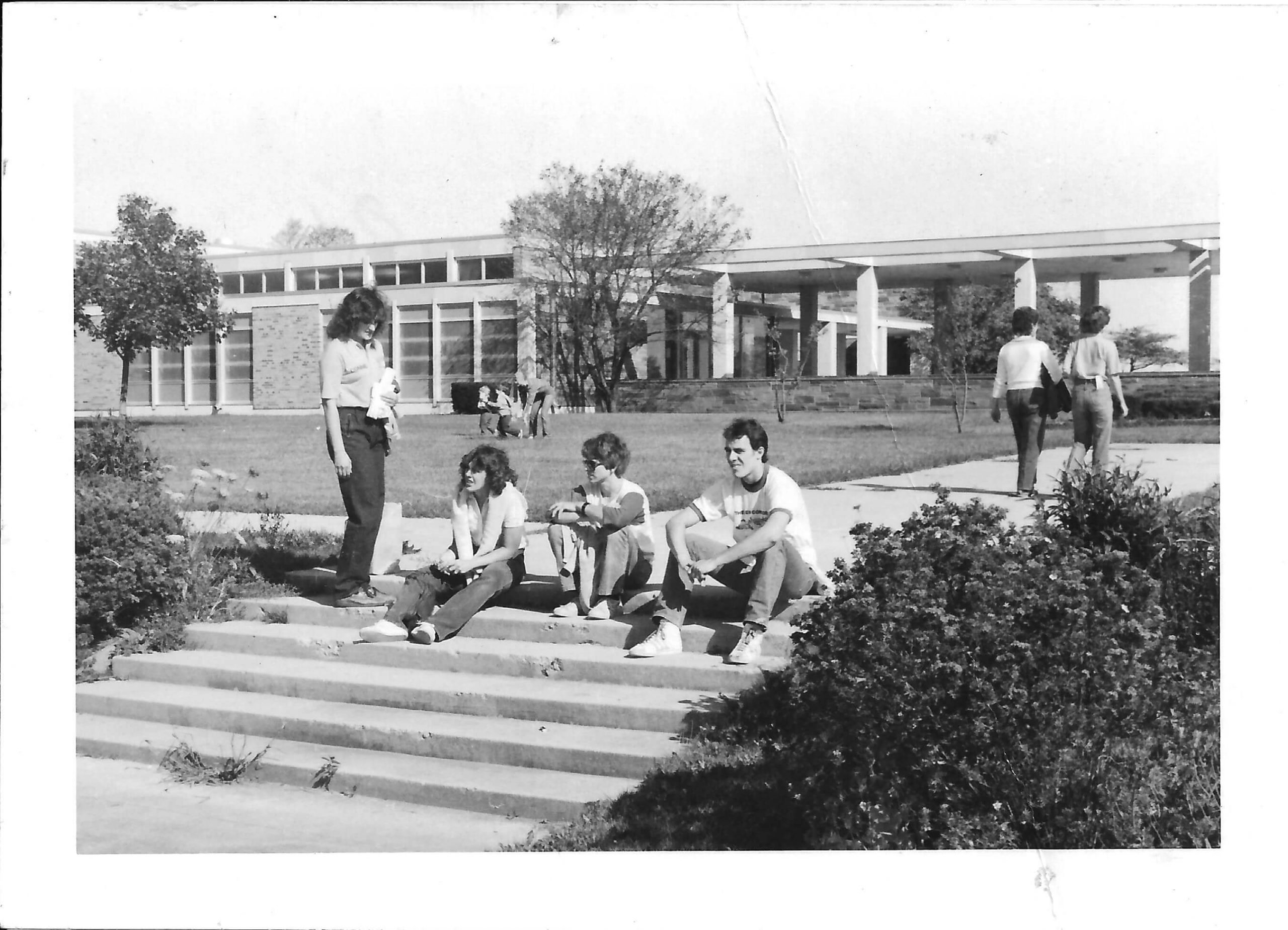
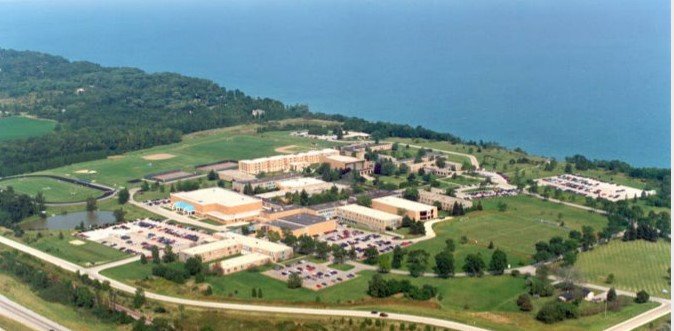
A move to university status
The expanse in programs and curriculum pushed Concordia College to seek accreditation status and recognition as a university.
“In August 1989, the college changed its name to Concordia University Wisconsin (Cario, 2006, pg. 124).” The enrollment numbers continued to increase steadily, and in 1991, 2,209 students were enrolled at CUW (“It’s History! 2,209 Students Enrolled,” 1991). Jumping ahead, in 1996, enrollment totaled “3,500 students, including 1,100 traditional undergraduates, 1,800 adult education students, and 600 graduate students (Cario, 2006, pg. 125). With the new campus, expansion in enrollment was readily welcomed. The previous Notre Dame of the Lake campus had the space and facilities available to afford CUW the growth it had been previously landlocked from.
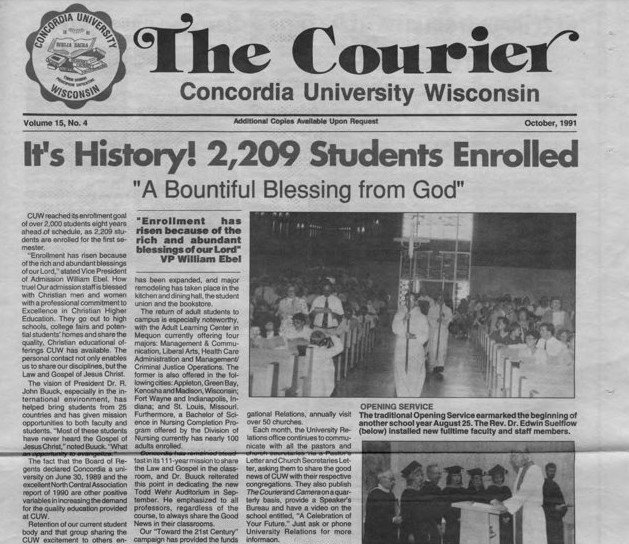
References
Bauer, F. (July 14, 1982). Concordia close to deal on new site. Milwaukee Journal, Photocopies of Newspaper Clippings (1935-1988) (Collection 1, Box 141). Concordia University Wisconsin Archives, Concordia University Wisconsin, Mequon, WI.
Buuck, John. (April 11, 1983). Memo To: The Faculty, School Sisters of Notre Dame (Collection 1, Box 10, Folder 1). Concordia University Wisconsin Archives, Concordia University Wisconsin, Mequon, WI.
Cario, W. (2006). One Blessing after Another: A History of Concordia University Wisconsin. Concordia Historical Institute Quarterly, 79(2), 110-132.
Centennial Fund Campaign Reaches $1.4 Million. (April, 1981). Camera, Vol.27, No.3 (Collection 1, 26A, Folder 1D). Concordia University Wisconsin Archives, Concordia University Wisconsin, Mequon, WI.
College, nuns close to deal. (July 14, 1982). Milwaukee Journal, Photocopies of Newspaper Clippings (1935-1988) (Collection 1, Box 141). Concordia University Wisconsin Archives, Concordia University Wisconsin, Mequon, WI.
Concordia celebrates move to new campus. (September 12, 1983). Milwaukee Journal, Photocopies of Newspaper Clippings (1935-1988) (Collection 1, Box 141). Concordia University Wisconsin Archives, Concordia University Wisconsin, Mequon, WI.
Concordia Has 680 Students. (n.d.). Milwaukee Journal, Photocopies of Newspaper Clippings (1935-1988) (Collection 1, Box 141). Concordia University Wisconsin Archives, Concordia University Wisconsin, Mequon, WI.
Concordia’s Peace Center Ideal for Retreats. (February, 1985). The Courier, Vol.9, No.2. https://cdm15983.contentdm.oclc.org/digital/collection/cuwnewspapers/id/332/rec/4
Concordia’s Proposed Library Nears Realization. (1982). Camera, (Collection 1, 26A, Folder 1D). Concordia University Wisconsin Archives, Concordia University Wisconsin, Mequon, WI.
Concordia to Build New Library. (December, 1980). Camera, Vol.27, No.2 (Collection 1, 26A, Folder 1D). Concordia University Wisconsin Archives, Concordia University Wisconsin, Mequon, WI.
“CUW Historical Timeline”. (n.d.). CUW historical timeline – buildings. Concordia University Wisconsin Archives Digital Collections. Retrieved April 2, 2022, from https://cuwarchives.omeka.net/cuw-timeline-buildings
Dillemuth, Frederick. (November 27, 1979). Students from Concordia College taking courses here (Collection 1, Series 1, Box 100). Department of Special Collections and University Archives, Marquette University, Milwaukee, WI.
Enrollment Soars; Freshman Class Concordia’s Largest. (September, 1982). Camera, Vol.29, No.1 (Collection 1, 26A, Folder 1D). Concordia University Wisconsin Archives, Concordia University Wisconsin, Mequon, WI.
Erosion Controlled. (May 2011) Top Projects of 2010 [Special Section]. The Daily Reporter, 16-19. Center for Environmental Sustainability (Collection 1, Box 61, Folder 22) Concordia University Wisconsin Archives, Concordia University Wisconsin, Mequon, WI.
“History of Concordia”. (n.d.). History of Concordia. Concordia University Wisconsin. Retrieved April 2, 2022, from https://www.cuw.edu/about/history.html
In Christ, A New Beginning. (October, 1982). The Courier, Vol.7, No.1. https://cdm15983.contentdm.oclc.org/digital/collection/cuwnewspapers/id/325/rec/1
It’s History! 2,209 Students Enrolled. (October, 1991). The Courier, Vol.15, No.4.
https://cdm15983.contentdm.oclc.org/digital/collection/cuwnewspapers/id/349/rec/1
Kenyon, R. (February 12, 1982). Concordia mulls move to Mequon. Milwaukee Journal, Photocopies of Newspaper Clippings (1935-1988) (Collection 1, Box 141). Concordia University Wisconsin Archives, Concordia University Wisconsin, Mequon, WI.
Luke, M. (1958). Open House Dedication. School Sisters of Notre Dame (Collection 1, Box 10, Folder 1). Concordia University Wisconsin Archives, Concordia University Wisconsin, Mequon, WI.
Motherhouse Chronicle. (1955-1962). School Sisters of Notre Dame (Collection 1, Box 10, Folder 1). Concordia University Wisconsin Archives, Concordia University Wisconsin, Mequon, WI.
Murphy, M. (August 24, 1982). Bid on new Concordia College site OK’d. Milwaukee Sentinel, Photocopies of Newspaper Clippings (1935-1988) (Collection 1, Box 141). Concordia University Wisconsin Archives, Concordia University Wisconsin, Mequon, WI.
Olive, R. (September 9, 1983). Concordia students adjust to new locale. Milwaukee Journal, Photocopies of Newspaper Clippings (1935-1988) (Collection 1, Box 141). Concordia University Wisconsin Archives, Concordia University Wisconsin, Mequon, WI.
Olive, R. (August 27, 1984). Concordia College anticipates expansion. Milwaukee Journal, Photocopies of Newspaper Clippings (1935-1988) (Collection 1, Box 141). Concordia University Wisconsin Archives, Concordia University Wisconsin, Mequon, WI.
Olive, R. (December 19, 1985). Concordia College looks for more growth. Milwaukee Journal, Photocopies of Newspaper Clippings (1935-1988) (Collection 1, Box 141). Concordia University Wisconsin Archives, Concordia University Wisconsin, Mequon, WI.
Our Lady’s Chapel. (n.d.). School Sisters of Notre Dame (Collection 1, Box 10, Folder 1). Concordia University Wisconsin Archives, Concordia University Wisconsin, Mequon, WI.
Raynor, John. (October 24, 1979). Concordia College (Collection 1, Series 1, Box 100). Department of Special Collections and University Archives, Marquette University, Milwaukee, WI.
Record Is Set at Concordia. (September 10, 1960). Photocopies of Newspaper Clippings (1935-1988) (Collection 1, Box 141). Concordia University Wisconsin Archives, Concordia University Wisconsin, Mequon, WI.
Resident Life Takes On New Staff, New Ideas. (April, 1990). The Concordia Beacon, Vol.VI, Issue 5. https://cdm15983.contentdm.oclc.org/digital/collection/cuwnewspapers/id/614/rec/17
Ryan, Paton. (November 1, 1979). Concordia College (Collection 1, Series 1, Box 100). Department of Special Collections and University Archives, Marquette University, Milwaukee, WI.
Serving God ‘Not Boring’. (September 10, 1962). Photocopies of Newspaper Clippings (1935-1988) (Collection 1, Box 141). Concordia University Wisconsin Archives, Concordia University Wisconsin, Mequon, WI.
Sisters agree to sell campus in Mequon for Concordia College move. (August 24, 1982). Milwaukee Journal, Photocopies of Newspaper Clippings (1935-1988) (Collection 1, Box 141). Concordia University Wisconsin Archives, Concordia University Wisconsin, Mequon, WI.
Stained Glass Church Windows Available for Purchase. (February 20, 1985). Chancery Newsletter, Vol.15, No.2, Chapel of Christ Triumphant (Collection 1, Box 61, Folder 0). Concordia University Wisconsin Archives, Concordia University Wisconsin, Mequon, WI.
Suggestions for New Windows on East Side of Chapel. (n.d.) Chapel of Christ Triumphant (Collection 1, Box 61, Folder 0). Concordia University Wisconsin Archives, Concordia University Wisconsin, Mequon, WI.
Survey shows move would aid Concordia. (March 6, 1982). Milwaukee Sentinel, Photocopies of Newspaper Clippings (1935-1988) (Collection 1, Box 141). Concordia University Wisconsin Archives, Concordia University Wisconsin, Mequon, WI.
The New Concordia College Milwaukee Campus. (September, 1982). Camera, Vol.29, No.1 (Collection 1, 26A, Folder 1D). Concordia University Wisconsin Archives, Concordia University Wisconsin, Mequon, WI.
Thiel, K. (2020, October 15). 10 years of environmental stewardship. Retrieved April 12, 2022, from https://blog.cuw.edu/cces-turns-10/.
Three Chapels at Notre Dame of the Lake. (June 13, 1959). School Sisters of Notre Dame (Collection 1, Box 10, Folder 1). Concordia University Wisconsin Archives, Concordia University Wisconsin, Mequon, WI.
—
If this story has inspired you, why not explore how you can help further Concordia's mission through giving.
